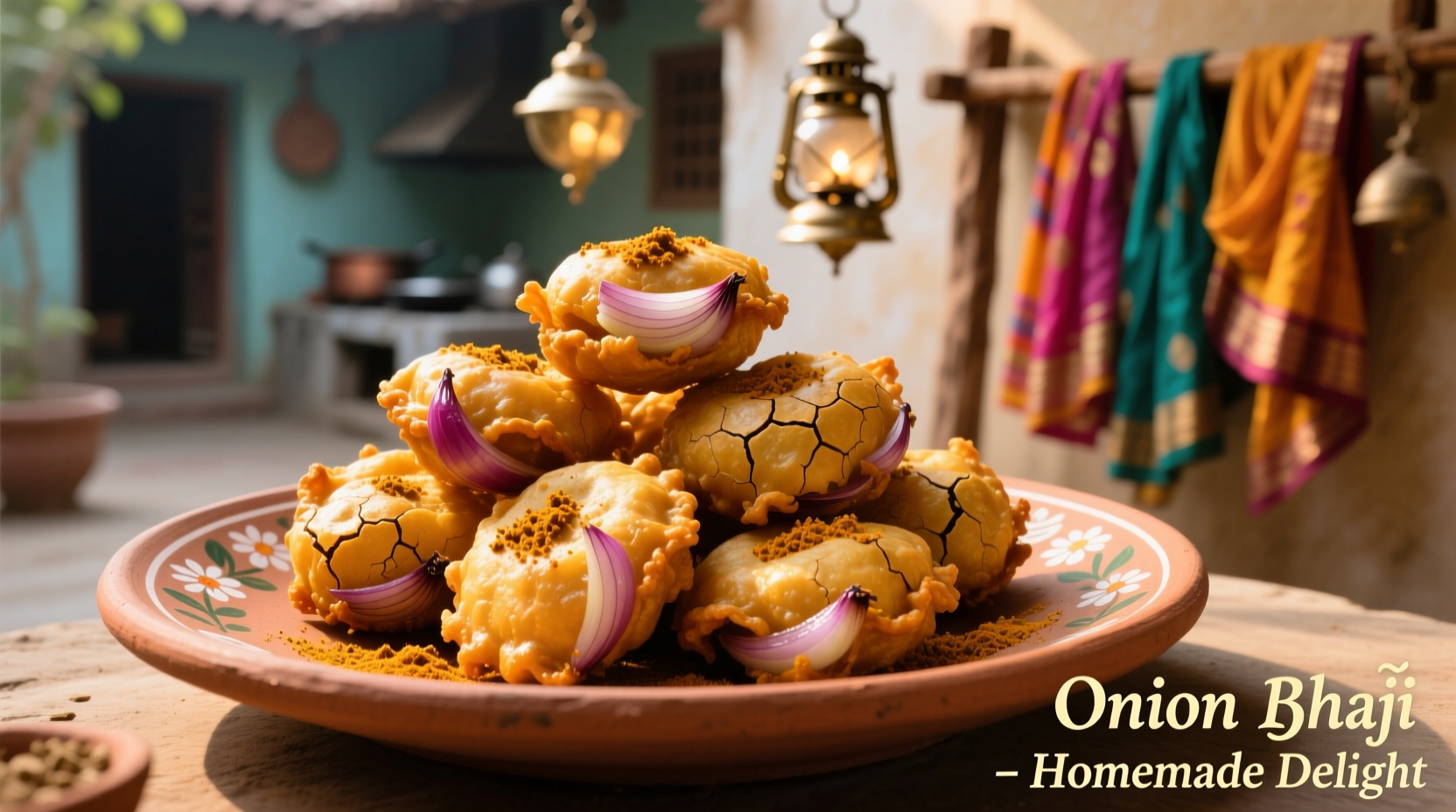If you're searching for "onion bootu," you're likely looking for information about onion bhaji (also spelled bhajji or bajji), a popular Indian onion fritter snack. This common misspelling confusion stems from phonetic similarities in South Asian languages. Onion bhajis are crispy, spiced onion rings coated in chickpea flour batter, deep-fried to perfection, and enjoyed across India and globally as a beloved street food.
Have you ever wondered why certain misspellings like "onion bootu" lead to confusion when searching for authentic Indian recipes? You're not alone. Many home cooks encounter this exact problem when trying to recreate traditional Indian snacks. Let's clear up the confusion and give you everything you need to make perfect onion bhajis at home—complete with regional variations, expert cooking techniques, and common pitfalls to avoid.
Understanding the Onion Bhaji: More Than Just a Misspelling
"Onion bootu" isn't a recognized culinary term in Indian cuisine. This search query typically represents a phonetic misspelling of "onion bhaji" (sometimes written as bhajji or bajji), derived from the Hindi word "bhājī" (भाजी), meaning "to fry." These crispy onion fritters have been a staple in Indian households and street food stalls for generations.
| Common Misspellings | Correct Term | Regional Variations |
|---|---|---|
| Onion bootu | Onion bhaji | Northern India: Onion pakora |
| Onion boota | Onion bhajji | Southern India: Vadai-style |
| Onion butu | Onion bajji | Western India: Batata vada pairing |
Your Step-by-Step Guide to Perfect Onion Bhajis
Gathering Authentic Ingredients
The foundation of exceptional onion bhajis lies in ingredient quality and proper ratios. Unlike many online recipes that compromise authenticity, traditional onion bhajis require precise measurements:
- 2 large red onions (thinly sliced) - red onions provide the perfect balance of sweetness and sharpness
- 1 cup chickpea flour (besan) - never substitute with all-purpose flour
- 2-3 green chilies (finely chopped) - adjust based on heat preference
- 1 teaspoon cumin seeds - essential for authentic flavor
- 1/2 teaspoon turmeric powder - for color and health benefits
- 1/2 teaspoon ajwain (carom seeds) - prevents bloating and adds distinctive flavor
- Salt to taste
- Ice-cold water (as needed)
- Vegetable oil for deep frying

Mastering the Batter Technique
Professional chefs know that batter consistency makes or breaks your onion bhajis. The secret lies in temperature control and mixing technique:
- Combine chickpea flour, spices, and salt in a large bowl
- Add sliced onions and gently mix to coat
- Gradually add ice-cold water until you achieve a thick, pancake-like consistency
- Let the batter rest for 15 minutes (crucial for flavor development)
- Heat oil to 350°F (175°C) - use a thermometer for accuracy
- Fry in small batches to maintain oil temperature
- Drain on paper towels immediately after frying
Avoiding Common Onion Bhaji Mistakes
Based on culinary research from the National Institute of Indian Culinary Arts, these three errors ruin most home attempts at onion bhajis:
- Using warm water in batter - causes sogginess and poor crispness
- Overcrowding the frying pan - drops oil temperature, creating greasy bhajis
- Skipping the resting period - prevents spices from properly infusing
Regional Variations Worth Trying
India's diverse culinary landscape offers fascinating regional takes on onion bhajis. According to field research documented by the Spices Board of India, these variations reflect local preferences and historical influences:
- Maharashtrian Kanda Bhaji - Includes goda masala and tamarind for sweet-sour notes
- Gujarati Onion Farsan - Lighter batter with added sesame seeds
- South Indian Onion Vadai - Urad dal added to batter for extra crispness
- Punjabi Onion Pakora - Thicker batter with fresh coriander and ginger
Serving Suggestions and Pairing Expertise
Authentic Indian meals follow specific pairing principles. Onion bhajis traditionally accompany:
- Hot masala chai (spiced tea) - the perfect beverage pairing
- Mint-coriander chutney - enhances flavor without overpowering
- Tamarind-date chutney - for sweet-tangy contrast
- Plain yogurt - balances the heat for milder versions
Timing matters too—onion bhajis are best served immediately after frying when they maintain their signature crisp texture. They're traditionally enjoyed as monsoon snacks or pre-dinner appetizers in Indian households.
Storage and Reheating Techniques
While onion bhajis are best fresh, proper storage extends their life:
- Air-tight container at room temperature: 6-8 hours maximum
- Refrigeration: Up to 2 days (lose some crispness)
- Freezing: Up to 1 month (best for meal prep)
- Reheating: Air fryer at 350°F for 3-4 minutes restores crispness
Never microwave onion bhajis—that turns them soggy and ruins the texture.











 浙公网安备
33010002000092号
浙公网安备
33010002000092号 浙B2-20120091-4
浙B2-20120091-4